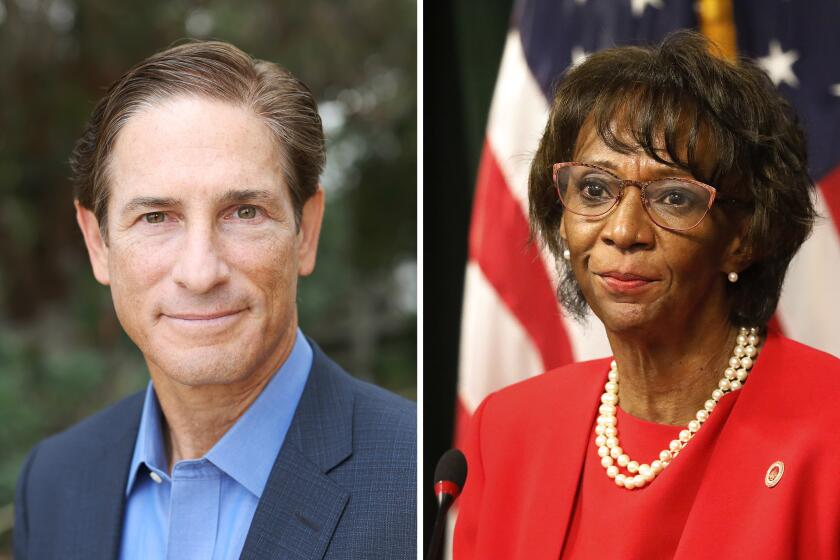How can L.A. create better places to play?
What do Los Angeles residents really want in their parks?
To take the public pulse, the Department of Recreation and Parks is launching the first citywide study in eight years to gauge how people view their 15,700 acres of park space.
The $350,000 study comes 18 months after City Controller Laura Chick faulted the department for being out of touch with park users’ wishes.
In her audit, Chick concluded that “lower income neighborhoods, including those predominantly populated by Latinos, African American and Asian/Pacific Islander communities, have dramatically less access to park resources than more affluent areas.”
She urged the department to conduct a study of residents’ needs every five years and to use that information to identify and offset “real and perceived inequities” in park services.
“We cannot and should not be running any city department, much less one that is so essential to our residents’ quality of life, by groping in the dark,” Chick wrote.
The study is slated to be finished early next year and will help determine the future of the department’s crown jewel, the 4,200-acre Griffith Park, as well as the city’s nearly 400 smaller parks, 372 children’s play areas, 306 sports fields and other facilities.
It comes at a key time for the city parks department, which has long struggled with a lack of parkland and is now confronted with the temporary loss of nearly 25% of Griffith Park in a May 8 wildfire.
Park planners are gearing up for a $50-million restoration of the park amid lobbying from hikers, equestrians and other users with sometimes conflicting views of the park’s character. The massive park northwest of downtown accounts for more than a quarter of Los Angeles parkland.
Simultaneously, some groups are calling on the department to provide poor neighborhoods -- particularly the children -- with better transportation to Griffith Park, as well as to create more park space elsewhere.
Environmental groups and public health experts see adding parkland as a way to promote exercise for children and combat obesity.
“There’s a silent health epidemic occurring in our children,” said Reed Holderman, vice president and regional director of the Trust for Public Land, a national group that assists communities in purchasing parkland. It has found that only 33% of Los Angeles schoolchildren live within a quarter mile of a park, compared with 97% in Boston and 91% in New York City.
A 2006 study of Los Angeles area parks by the City Project, an L.A.-based group, reached similar conclusions and found large disparities in park acreage in different City Council districts.
Robert Garcia, the group’s executive director, says the upcoming study should address not only the amount of park space but the needs of various park users.
“Different cultural groups need parks in different ways,” Garcia said. Research at UCLA has shown that many Latinos use parks for socializing, while African Americans often play team sports there and whites value parkland for passive qualities such as greenery and landscaping, he said.
The needs of senior citizens must also be addressed, said Juanita Fleming, a former local AARP leader who heads a parks committee for the Angeles chapter of the Sierra Club.
“A lot of the recreation centers do not have a senior program. Why allow the facilities to sit there and not be utilized?” Fleming said.
Michael Shull, the department’s director of planning and development, promises that his staff will collect ideas from residents throughout the city.
“This will be a transparent process. We’re not going to do it in a black box,” Shull said. Public meetings will begin this summer at spots around the city, and the city will also seek ideas through focus groups and visits to schools and local meetings, he said.
Park advocates call the needs assessment long overdue, saying that without it, the city will be hobbled in restoring the Griffith Park burn area and improving park services elsewhere.
Garcia would like to see a needs study performed specifically for Griffith Park, which may happen if the city can find funding, said Kevin Regan, the department assistant general manager who oversees the park.
In recent years, Griffith Park in particular has been under intense community scrutiny. A 2005 draft master plan laid out a road map for the next 25 years, including proposals to increase public access with two aerial trams -- one to the Griffith Observatory, the other to Toyon Vista -- as well as to bury utility lines and add baseball fields and two parking garages at the park’s periphery.
The plan triggered controversy among park users, and a working group appointed to review it “decided to scrap it altogether and start over,” said group member Bernadette Soter, who lives near the park. The plan, she said, contained “too much development, too much emphasis on using the park for revenue enhancement.”
The Griffith Park working group’s meetings, which are open to the public, are held the first Monday of every month at 6:30 p.m., usually at the Griffith Park Ranger Station Auditorium, 4730 Crystal Springs Drive.
Shull will discuss the fire recovery plan at the group’s next meeting this Monday at a different location, Friendship Auditorium, 3201 Riverside Drive. More information can be found on line at www.laparks.org/dos/parks/griffithPK/gp_masterplan.htm.
Updates on the citywide needs study will be posted at www.laparks.org.
Times staff writer Ashraf Khalil contributed to this report.
More to Read
Start your day right
Sign up for Essential California for news, features and recommendations from the L.A. Times and beyond in your inbox six days a week.
You may occasionally receive promotional content from the Los Angeles Times.





